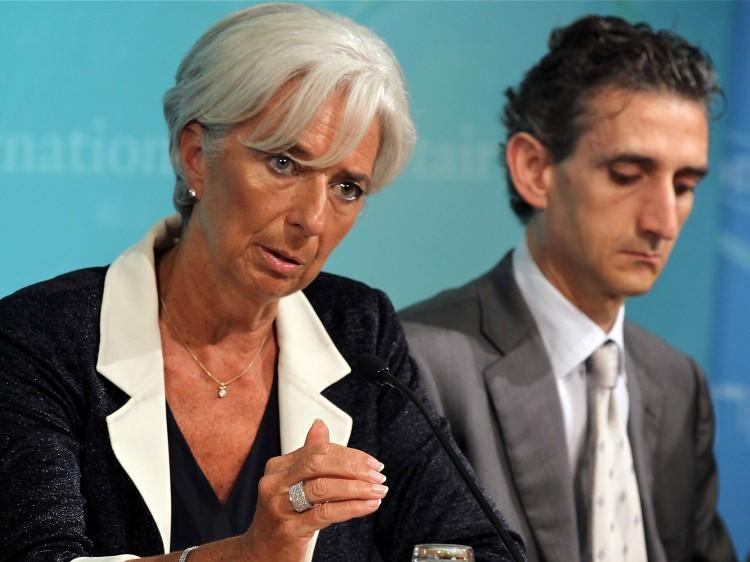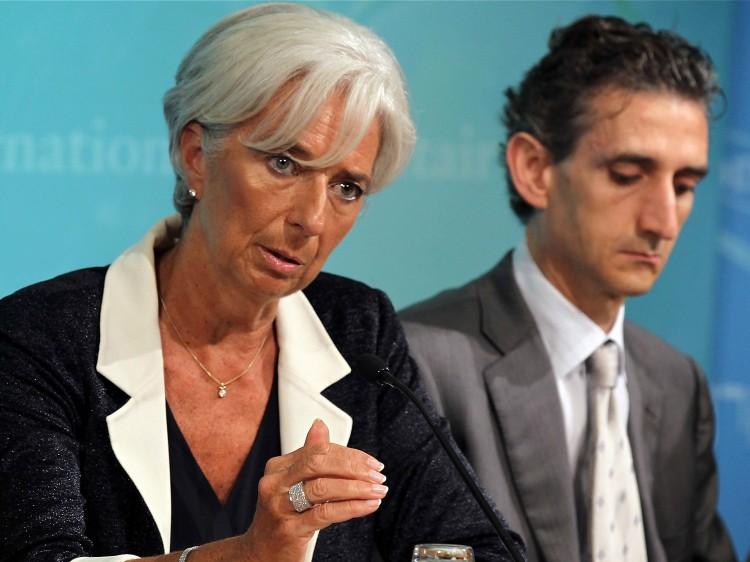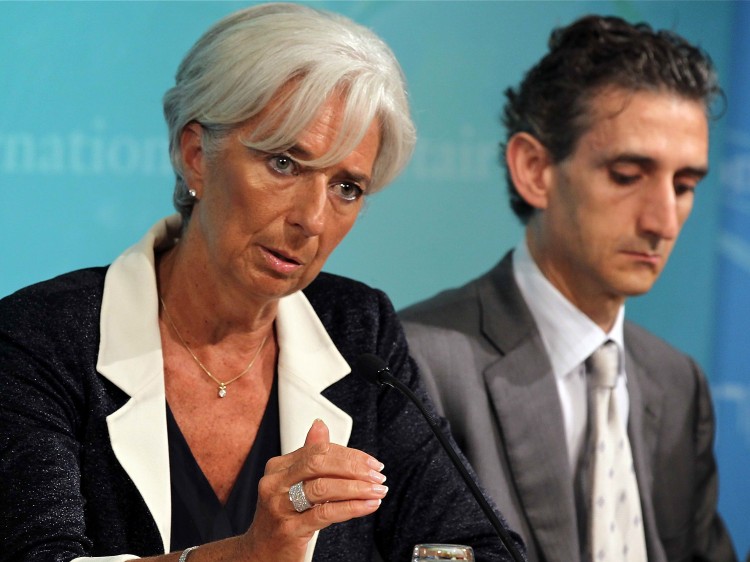EUROPEAN MARKET INSIGHT
Spain Suffers Worst as Europe Slides Back Into Danger Zone
Despite the seemingly good news of the approved bank bailout, the market sell-off signals that traders and investors do not believe that the initiative by the EU will work.

IMF Managing Director Christine Lagarde (L) speaks as U.S. Mission Chief Gian Maria Milesi-Ferretti (R) listens during a news conference on July 3 at the IMF headquarters in Washington. IMF is concerned over Spain's banking sector and its autonomous regions, which are in critical financial condition. Alex Wong/Getty Images
|Updated:
Valentin Schmid is a former business editor for the Epoch Times. His areas of expertise include global macroeconomic trends and financial markets, China, and Bitcoin. Before joining the paper in 2012, he worked as a portfolio manager for BNP Paribas in Amsterdam, London, Paris, and Hong Kong.
Author’s Selected Articles






